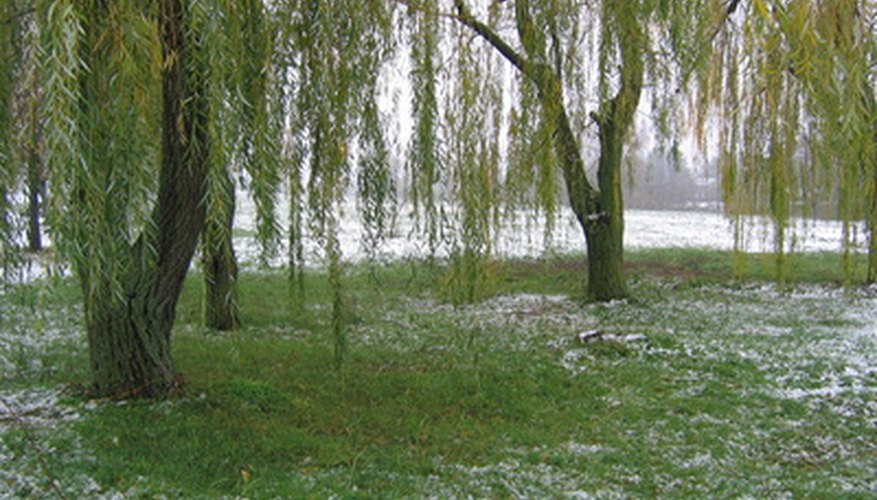The weeping willow (Salix salicaceae) is a tree known for its ample size and long hanging branches. Like all trees, the weeping willow requires proper care to thrive. It is important to train the weeping willow when young to grow wide branches and a strong central trunk to increase the strength and longevity of the tree. Training and pruning of a weeping willow tree should occur in late fall or winter during the dormant season to prevent stressing the tree from excessive sap loss and decreasing the risk for infection or infestation from pests. Prune no more than necessary to prevent damaging the tree.
- The weeping willow (Salix salicaceae) is a tree known for its ample size and long hanging branches.
- Training and pruning of a weeping willow tree should occur in late fall or winter during the dormant season to prevent stressing the tree from excessive sap loss and decreasing the risk for infection or infestation from pests.
Put on safety gloves and safety glasses.
Break the bark of the weeping willow tree by cutting a small wedge in to the underside of the branch you want to prune on the branch side of the stem collar (the lip that separates the branch of the tree from the trunk) to prevent tearing of the bark when the pruning cut is made. This wedge should be several inches higher than the stem collar.
Make a sharp cut clean through the branch of the weeping willow tree with the pole pruner and lopper an inch or two higher than the wedge previously cut.
Shorten the stub left by the cut just made by making another clean cut with the pole pruner and lopper parallel to the stem collar on the branch side.
Prune all branches that grow below 6 feet on the trunk of the weeping willow tree to create an open space under the canopy to allow for air circulation.
- Make a sharp cut clean through the branch of the weeping willow tree with the pole pruner and lopper an inch or two higher than the wedge previously cut.
- Prune all branches that grow below 6 feet on the trunk of the weeping willow tree to create an open space under the canopy to allow for air circulation.
Cut any drooping branches as required to enabled access underneath the canopy for pedestrian uses.
Prune branches that crowd together or if a second mainline trunk begins to grow.
Cut away any dead, diseased or damaged branches to prevent the malformation of the tree whenever needed.
Disinfect and clean pruning tools after use to prevent spreading diseases. To disinfect, mix a solution in a bucket of nine parts water to one part bleach and rise tools thoroughly. Wash tools with soap and water then dry before storage.
WARNING
Hire a landscaping professional if you're not experienced in using the appropriate pruning tools to prevent injury to yourself.
